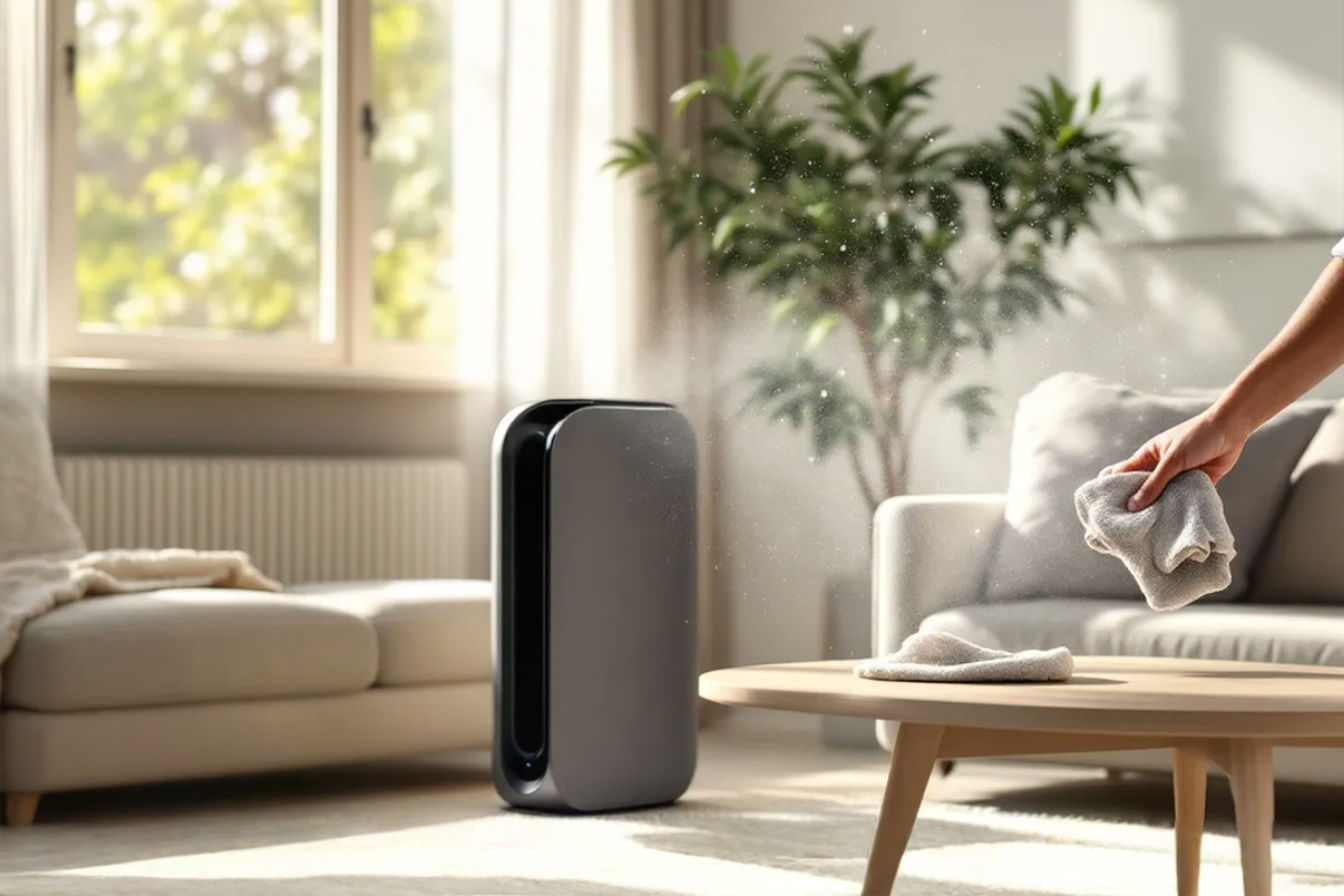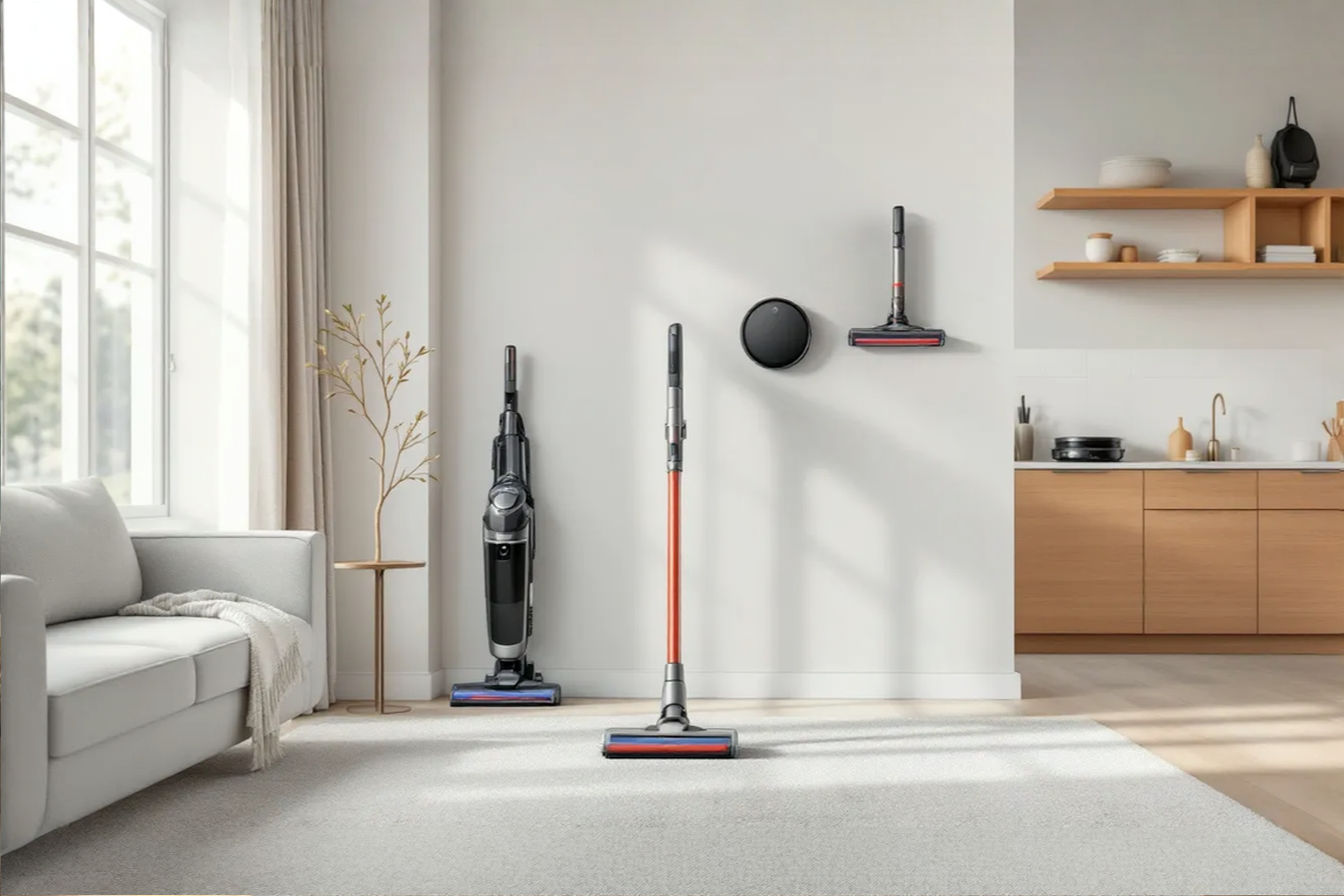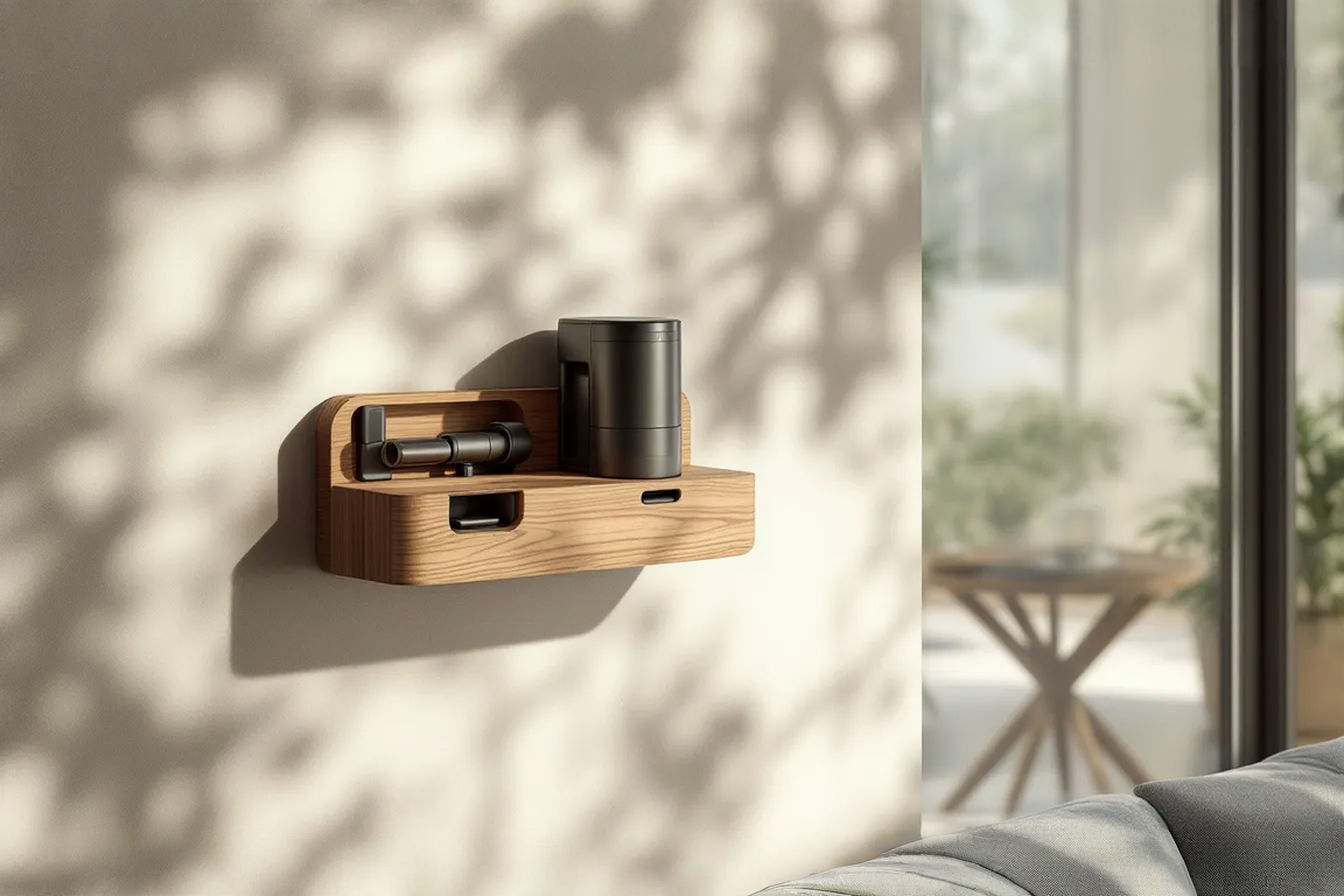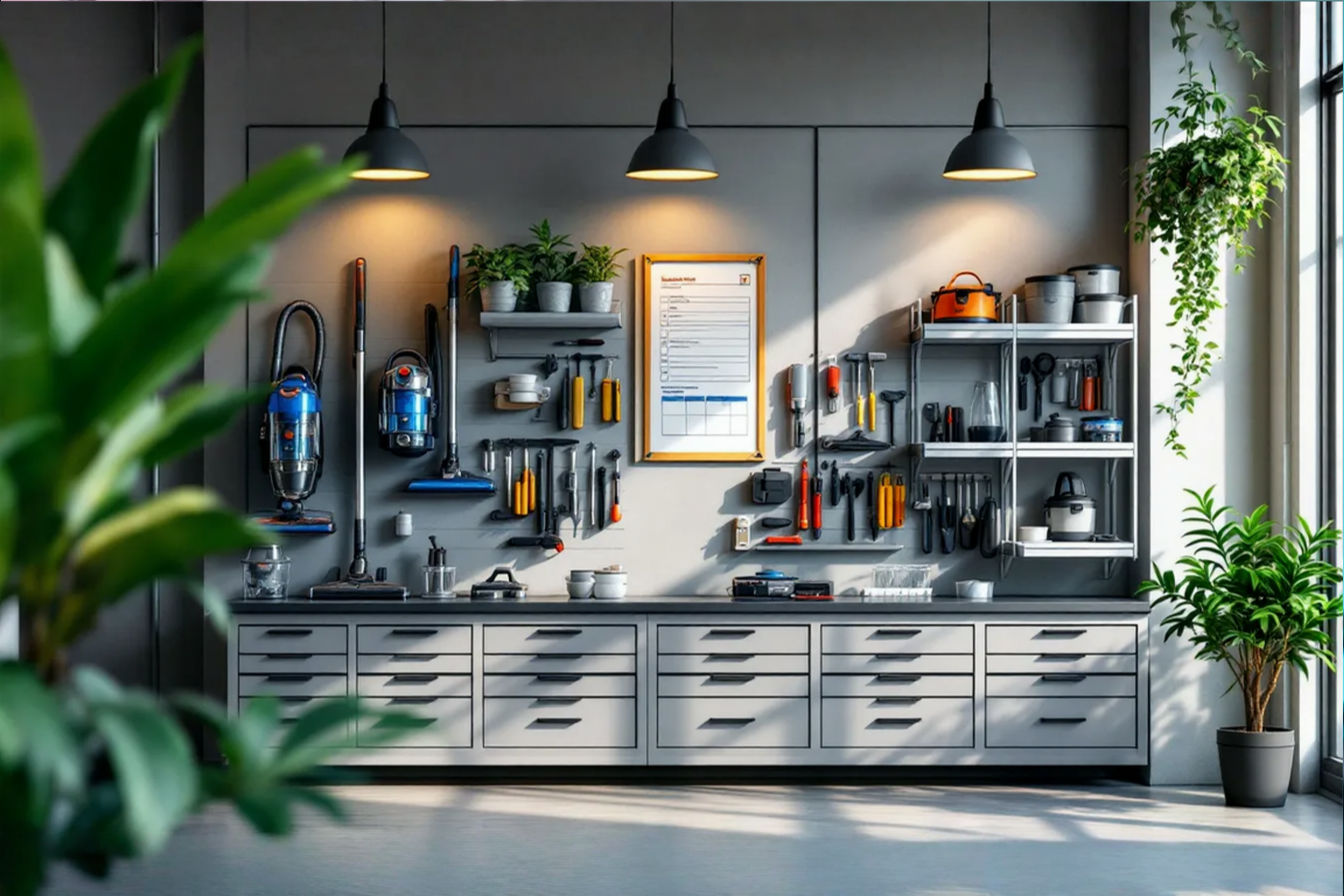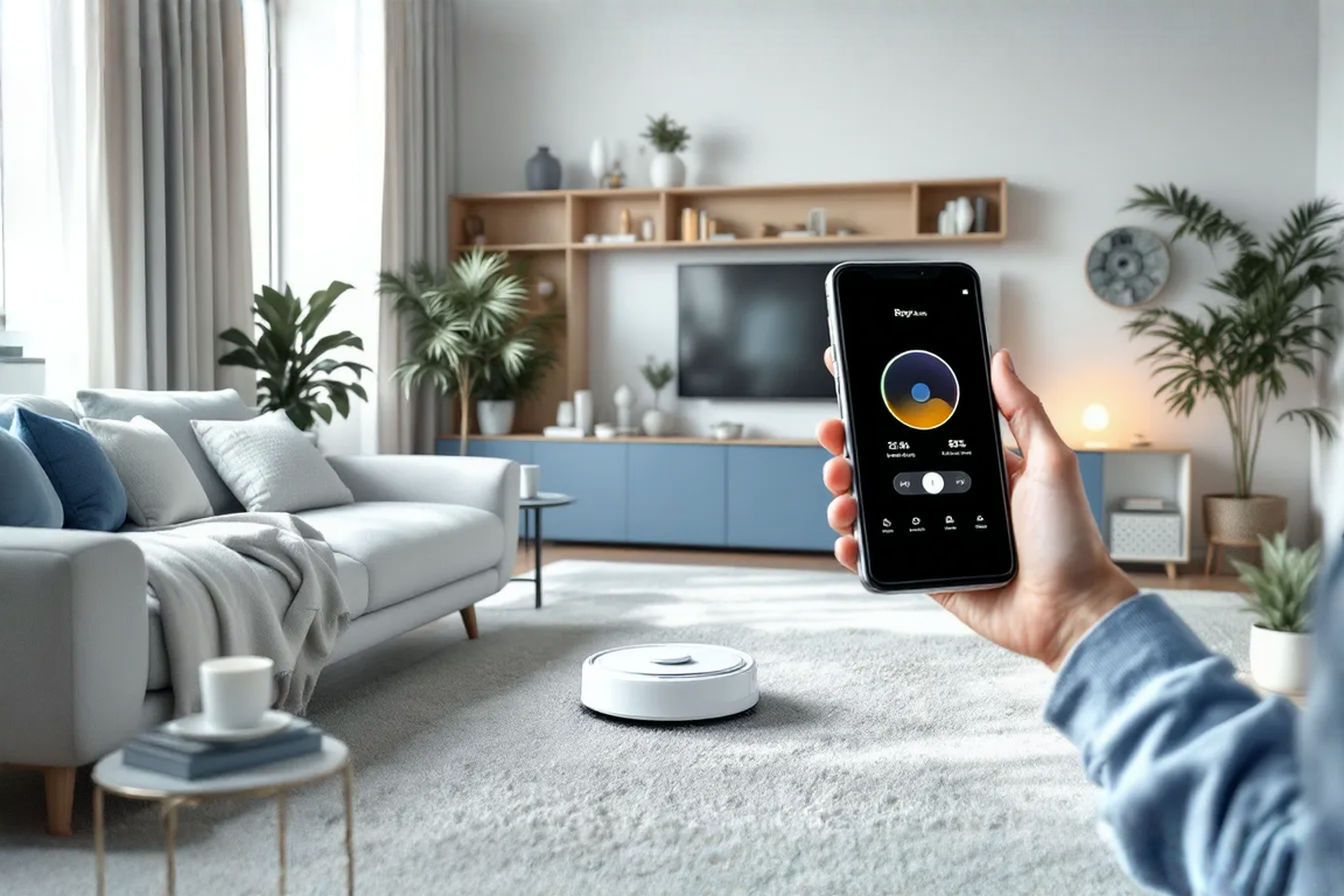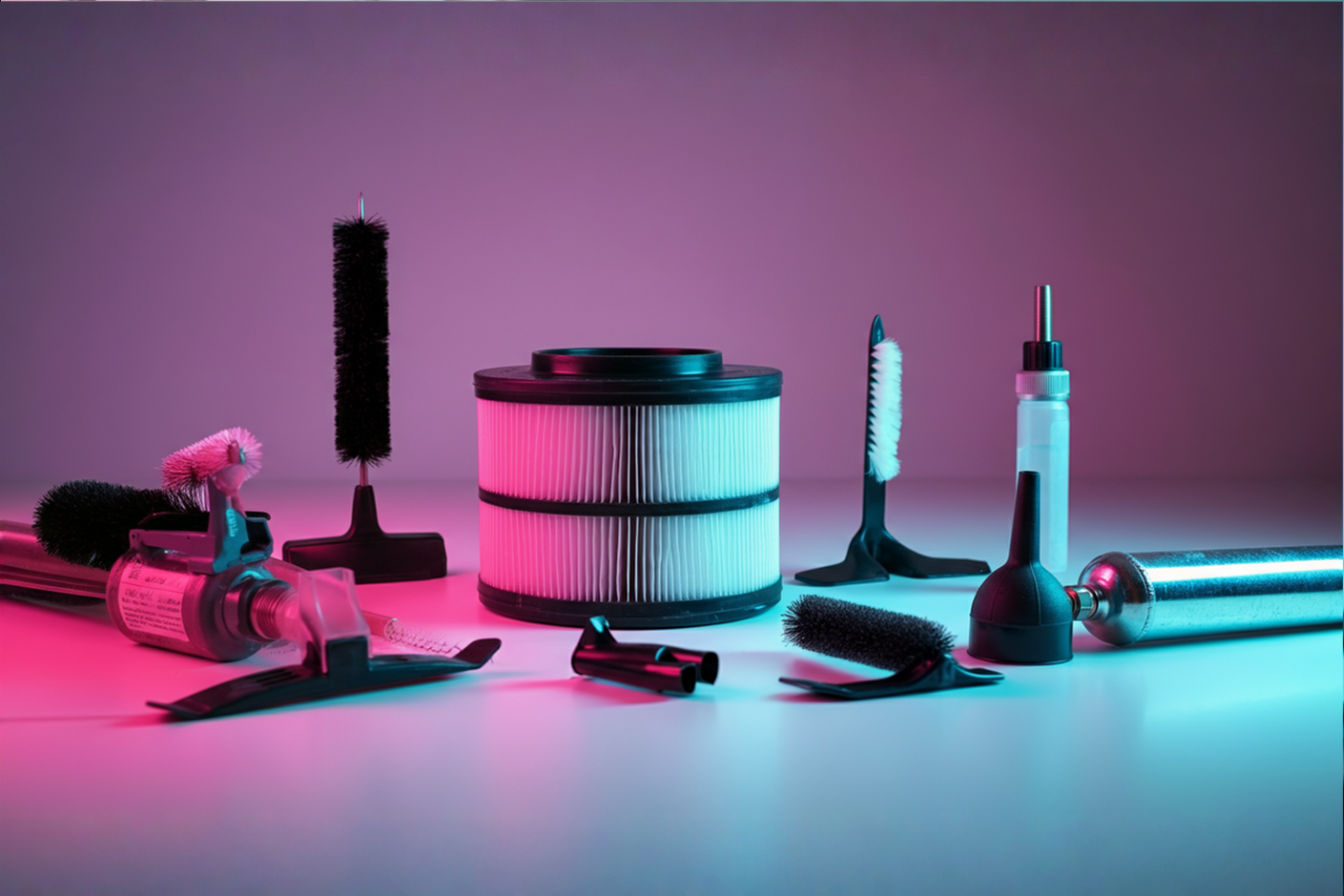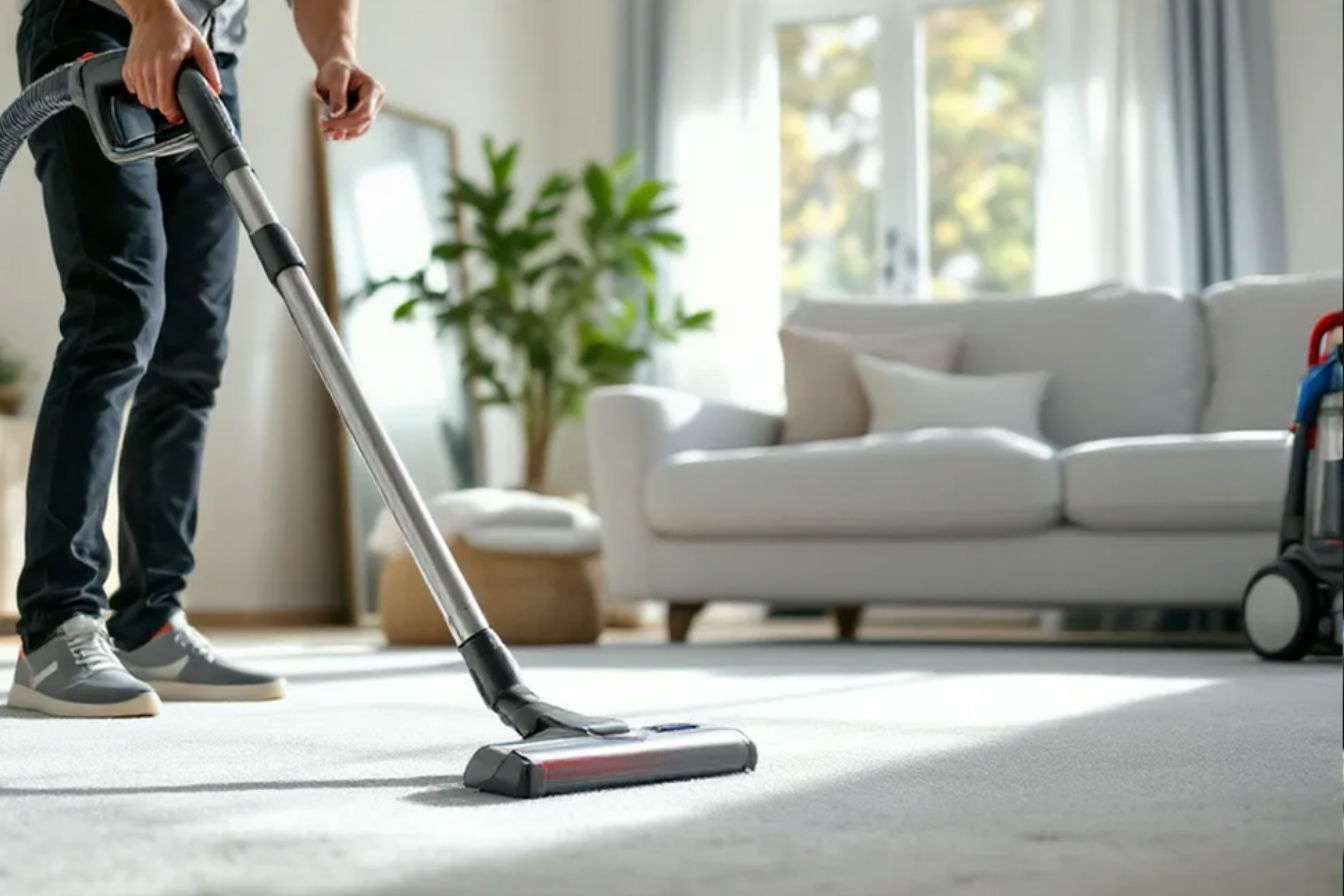Air Purifier Synergy: Coordinating Air and Surface Cleaning for Maximum Impact
Want cleaner air at home? The secret isn’t just buying an air purifier—it’s creating synergy between air and surface cleaning. Learn the strategy experts use for maximum impact.
This post may contain affiliate links. If you make a purchase through these links, we may earn a commission at no additional cost to you.
Did you know the air inside your home is likely dirtier than the air outside? According to the EPA, indoor air can be 2-5 times more polluted than outdoor air. That’s a big deal since most of us spend about 90% of our time indoors.
Many people buy an air purifier and think their work is done. Others focus only on surface cleaning. The truth? Neither approach alone gives you truly clean indoor air. The real solution lies in air purifier synergy – coordinating air and surface cleaning to work together in perfect harmony.
This guide will show you how to create that harmony. You’ll learn why the air purifier and surface cleaner combination matters, how to time your cleaning for the best results, and simple ways to create integrated air cleaning solutions for your whole home. By the end, you’ll understand how to make these two cleaning approaches work together for cleaner air, fewer allergens, and a healthier home environment.
Understanding the Indoor Air Quality Challenge
The Invisible Problem in Your Home
Your home contains millions of tiny particles floating in the air. Most are too small to see, but they affect your health in big ways. Common indoor pollutants include:
- Dust and dust mites
- Pet dander and hair
- Pollen from outside
- Mold spores
- Smoke particles
- Chemicals from cleaning products
- Gases from cooking and heating
These pollutants don’t just stay in the air. They move constantly between the air and the surfaces in your home. When you walk across a room, sit on furniture, or open a door, you stir up particles from surfaces back into the air. Even the heat from your body creates air currents that lift settled dust.
This creates a never-ending cycle. Particles float in the air, settle on surfaces, and then get kicked back up into the air again. This cycle makes indoor air quality a moving target that’s hard to control with just one cleaning method.
Why Clean Air Needs Clean Surfaces
Think about what happens after you dust a table. At first, it looks clean. But within hours or days, a new layer of dust appears. Where did it come from? Much of it fell from the air.
The same thing happens in reverse. Even the best air purifier can’t keep up if your surfaces constantly release new particles into the air. It’s like trying to empty a bathtub while the faucet is still running.
Surface-to-air transfer happens all day long:
- Dust on bookshelves becomes airborne when you grab a book
- Pet dander on the couch poofs into the air when you sit down
- Allergens in carpets rise up with each footstep
- Mold spores on bathroom surfaces get airborne in steamy showers
This is why single-approach cleaning falls short. Air purifiers can’t clean surfaces, and surface cleaning alone won’t keep particles from becoming airborne again. The two approaches need to work together in a coordinated way.
How Air Purifiers Work: Capabilities and Limitations
Types of Air Purifiers and What They Capture
Air purifiers use different technologies to clean the air, each with specific strengths. Understanding these differences helps you choose the right one for your needs.
HEPA filters are the gold standard for particle removal. They can capture 99.97% of particles as small as 0.3 microns—that’s smaller than most dust, pollen, and pet dander. If allergies or asthma are your main concern, HEPA is your best bet.
Activated carbon filters excel at removing odors, gases, and volatile organic compounds (VOCs). These filters trap smells from cooking, pets, and chemical fumes from cleaning products or new furniture. Carbon filters don’t catch particles well, so they’re usually paired with HEPA filters.
UV technology kills germs rather than trapping them. UV-C light damages the DNA of bacteria, viruses, and mold spores, making them unable to reproduce. However, UV works best when air moves slowly past the light, which isn’t always the case in typical purifiers.
Ionizers and electrostatic precipitators give particles an electrical charge, making them stick to surfaces or collection plates. While effective at removing some particles, they can produce ozone, which irritates lungs. Look for models that are certified “ozone-free” if you choose this type.
What Air Purifiers Miss
Even the best air purifiers have limitations. Understanding these blind spots helps you see why surface cleaning remains essential.
First, air purifiers only clean the air that passes through them. Particles that have already settled on surfaces stay put. Heavy particles like large dust or hair often settle too quickly for purifiers to catch them.
Second, air purifiers can’t reach everywhere. Areas with poor airflow—like corners, closets, or spaces behind furniture—may have little air circulation. Particles in these “dead zones” rarely make it to your purifier.
Third, daily activities constantly reintroduce pollutants. Every time you open a door, cook a meal, or pet your dog, you’re adding new particles to the air. Your purifier works constantly but can’t keep up with continuous new sources.
Finally, some particles are too heavy to stay airborne long enough to reach the purifier. These quickly settle on floors, furniture, and other surfaces, creating reservoirs of pollutants that regular activities stir back into the air.
Surface Cleaning Essentials
Effective Surface Cleaning Methods
Not all surface cleaning methods are equal when it comes to improving air quality. Some methods actually make things worse by stirring up dust without capturing it. Others truly remove pollutants from your home.
Vacuuming with HEPA filters is far better than standard vacuums. Regular vacuum cleaners can spew dust back into the air through their exhaust. HEPA-filtered vacuums trap those tiny particles instead. For best results, vacuum slowly to give the machine time to suck up embedded dirt.
Damp dusting beats dry dusting every time. Dry dusting with feather dusters or dry cloths just moves dust around. Damp microfiber cloths actually capture and remove dust. The slight moisture helps particles stick to the cloth instead of becoming airborne.
Disinfection is different from cleaning. Cleaning removes dirt and some germs, while disinfecting kills germs on surfaces. Both steps matter. Always clean surfaces first, then disinfect if needed. Many people make the mistake of spraying disinfectant on dirty surfaces, which greatly reduces effectiveness.
Microfiber tools dramatically outperform traditional cotton or paper products. Their tiny fibers create many more surfaces to trap particles. A good microfiber cloth can capture particles as small as 0.3 microns—the same size HEPA filters trap.
Problem Areas Often Missed
Even thorough cleaners often overlook key spots that harbor pollutants. These problem areas can undermine your cleaning efforts if neglected.
Soft surfaces like upholstery, curtains, and carpets hold enormous amounts of dust, allergens, and other particles. These surfaces need regular attention with appropriate tools like upholstery attachments on vacuum cleaners or steam cleaners for deeper cleaning.
Wall dust and ceiling fans often go unnoticed but can be major sources of particles. Ceiling fans especially can collect thick layers of dust that shower down when the fan runs. Clean fan blades at least monthly and walls quarterly.
Behind and under furniture remains untouched in many homes for months or years. These areas become dust reservoirs. Make a schedule to move furniture and clean these hidden spaces at least seasonally.
Electronics and heat-producing items like TVs, computers, game consoles, and lamps attract dust through static electricity and air flow from cooling fans. These need regular gentle cleaning with microfiber cloths or electronics-safe cleaning tools.
The Synergy Effect: Why Coordination Matters
The Science of Combined Cleaning
Research shows that combining air purification with strategic surface cleaning creates results greater than the sum of their parts. This is what scientists call a synergistic effect.
Studies demonstrate that homes using both methods see up to 80% more allergen reduction compared to homes using either method alone. This happens because each approach tackles a different part of the pollution cycle.
Think of air purifiers and surface cleaning as a team. Air purifiers work continuously to remove floating particles, while surface cleaning prevents re-pollution of the air. When timed correctly, they create a powerful one-two punch against indoor pollutants.
The synergistic approach breaks the pollution cycle in multiple places. Surface cleaning removes the reservoirs of potential air pollutants, while air purification catches particles before they can settle. This disrupts the continuous recycling of pollutants between air and surfaces.
Scientists studying indoor air quality have found that after thorough surface cleaning, air purifiers work more efficiently and maintain cleaner air for longer periods. Similarly, homes with good air purification need less frequent deep cleaning to maintain the same level of cleanliness.
Benefits Beyond Clean Air
The benefits of air purifier synergy extend far beyond just cleaner air. When you focus on coordinating air and surface cleaning, you’ll discover practical advantages that save you time and money.
Reduced cleaning frequency is a major benefit. When your air stays cleaner through whole home air quality management, dust and dirt accumulate more slowly on surfaces. Many people find they can extend the time between deep cleanings when using both approaches together.
Extended purifier filter life saves money over time. When you remove more particles through surface cleaning, fewer particles reach your air purifier filters. This means you won’t need to replace those expensive filters as often, cutting maintenance costs.
Lower overall maintenance costs apply to more than just filters. Your HVAC system, electronics, and even furniture last longer when not constantly bombarded with dust and particles. Less dust means less wear and tear on mechanical parts and surfaces throughout your home.
Perhaps most importantly, improved respiratory health outcomes can result from combined cleaning approaches. People with allergies and asthma often report fewer symptoms and better quality of life when living in homes with both good air purification and regular surface cleaning.
Creating Zones for Maximum Cleaning Impact
High-Priority Cleaning Zones
Not all areas in your home need the same level of attention. Creating zones helps you focus your efforts where they matter most.
Bedrooms deserve top priority because you spend about a third of your life there. During sleep, your face is close to pillows and bedding for hours. This extended exposure means bedroom air quality directly affects your health and sleep quality. Focus your best air purification and most frequent surface cleaning in bedrooms.
Living rooms and high-activity areas come next on the priority list. These spaces see the most foot traffic and human activity, which constantly stirs up particles. Living rooms also tend to have more fabric surfaces like couches and curtains that trap and release pollutants.
Kitchens and bathrooms face unique challenges with moisture and odors. These rooms create specific pollutants like cooking smoke, food odors, and mold spores from damp environments. Air purifiers with activated carbon work well in kitchens, while bathrooms benefit from units that target mold and mildew.
Home offices and work spaces have become more important as remote work increases. These areas often contain electronics that generate heat and attract dust. Paper products and printers can also release particles. Clean air helps maintain focus and productivity in these spaces.
Customizing Your Approach by Room
Different rooms need different cleaning strategies based on their contents and use patterns.
Match purifier types to room needs for best results. Bedrooms benefit from quiet operation and HEPA filtration. Kitchens need odor control through activated carbon. Living areas might need larger units with higher air flow to handle more space and activity.
Surface priorities vary by room too. In bedrooms, focus on bedding, under beds, and closets. In living rooms, upholstery and high-touch surfaces need attention. Kitchens require frequent cleaning of cooking areas and splash zones, while bathrooms need moisture management on all surfaces.
Managing room transitions and air flow helps contain pollutants. Keep bedroom doors closed when possible to maintain the cleaner air in sleeping spaces. Position air purifiers where they can intercept airborne particles moving between rooms, like doorways or central locations.
The Perfect Timing: Coordinating Cleaning Activities
Strategic Cleaning Sequence
The order of your cleaning tasks makes a big difference in your results. A strategic sequence amplifies the benefits of both approaches.
Always clean from top to bottom to avoid recontaminating already-cleaned surfaces. Start with ceiling fans and high shelves, then work your way down to furniture, and finally floors. This prevents dust from higher surfaces falling onto already-cleaned lower surfaces.
Surface cleaning should happen before air purifying for maximum efficiency. First, remove as much dust and allergens from surfaces as possible. Then, run your air purifier on high for a few hours to catch airborne particles stirred up during cleaning. This one-two punch removes more total pollutants from your home.
Schedule for optimal results by creating a cleaning calendar. Daily maintenance might include running air purifiers constantly and quick surface wipe-downs. Weekly tasks could include vacuuming, mopping, and laundering bedding. Monthly deep cleaning might tackle often-overlooked areas like under furniture and inside closets.
Seasonal Considerations
Different seasons bring different air quality challenges. Adjust your cleaning strategy throughout the year for best results.
During high allergy seasons, increase both air purification and surface cleaning frequency. Spring pollen and fall ragweed seasons call for more frequent vacuuming and daily running of air purifiers. Keep windows closed during peak pollen times, even on nice days.
Winter and summer present different challenges. Winter often means closed windows and more indoor time, which can concentrate indoor pollutants. Summer may bring higher humidity, which encourages dust mites and mold. Adjust your cleaning focus based on season-specific issues in your region.
Plan deep cleaning timing around seasonal transitions. Many homes benefit from major cleaning efforts in spring and fall. These seasonal deep cleans should include moving furniture, washing curtains, cleaning behind appliances, and other tasks that don’t happen weekly.
Special Considerations for Allergies and Asthma
Creating Allergy-Free Zones
For people with allergies or asthma, creating dedicated low-allergen spaces provides relief and better sleep.
Bedroom sanctuary strategies should be your top priority. Remove carpeting if possible and replace with hard flooring. Use allergen-proof covers on mattresses and pillows. Wash bedding weekly in hot water. Ban pets from these rooms entirely, even friendly ones. Keep windows closed during high pollen seasons.
Allergen-proofing key living spaces extends the benefits beyond the bedroom. Remove or regularly clean items that collect dust, like decorative pillows, stuffed animals, and heavy drapes. Choose furniture with smooth, easy-to-clean surfaces rather than textured fabrics that trap particles.
For severe allergies, layered defense works best. Combine HEPA air purifiers, HEPA vacuum cleaners, allergen-proof bedding, regular damp dusting, and removal of allergy triggers like houseplants or carpeting. This comprehensive approach targets allergens from multiple angles for better symptom control.
Managing Asthma Triggers
Asthma requires special attention to both cleaning methods and potential triggers.
Identify specific asthma triggers for the affected person, as they vary widely. Common triggers include dust mites, pet dander, mold, cockroach droppings, and irritants like strong odors. Once identified, focus your cleaning efforts on reducing these specific triggers.
Emergency purification approaches help during asthma flare-ups. Keep a high-quality portable air purifier ready to deploy in any room where an asthma attack occurs. Some families create a “clean room” with maximal air purification where asthmatic family members can go during environmental challenges like wildfire smoke or high pollution days.
Regular monitoring maintains low-trigger environments. Track symptoms in relation to activities, rooms, and times of day to identify problem areas. Consider using air quality monitors to identify spikes in particles or VOCs that might trigger symptoms. Adjust your cleaning routine based on this information.
Measuring Success: Is Your Strategy Working?
Signs of Improved Air Quality
How do you know if your combined approach is working? Look for these positive changes:
Visible indicators include less dust on surfaces between cleanings. You might notice less dust floating in sunlight beams and less dust buildup on electronics and fans. Your home should simply look cleaner for longer periods between cleaning sessions.
Health improvements often appear gradually. Family members might experience fewer allergy symptoms, better sleep, less snoring, reduced asthma attacks, and fewer respiratory infections. Keep track of these changes as they can confirm your cleaning strategy is working.
Filter condition provides clear feedback. With effective surface cleaning, your air purifier filters should stay cleaner longer between replacements. Very dirty filters within a short time might indicate you need more frequent surface cleaning or that you’ve missed some major dust reservoirs.
Testing and Monitoring Options
For more precise feedback, consider these measurement approaches:
DIY assessment techniques are simple but effective. The “flashlight test” involves darkening a room and shining a flashlight parallel to surfaces to reveal dust. The “black cloth test” checks how much dust settles in 24 hours by placing a dark cloth on a shelf and examining it the next day.
Air quality monitors provide real-time data on particles, humidity, and sometimes VOCs in your home. These devices range from basic particle counters to sophisticated smart monitors that track multiple pollutants. They help identify problem areas and times when pollution increases.
Professional testing might be necessary for serious health concerns. If symptoms persist despite your best efforts, consider hiring an indoor air quality professional who can test for specific pollutants like mold spores, formaldehyde, or radon that DIY methods can’t detect.
Cost-Effective Implementation Strategies
Starting Small for Big Impact
You don’t need to buy expensive equipment for every room at once. Start strategically for the biggest initial benefits.
Prioritize equipment and cleaners by focusing first on bedrooms and most-used living spaces. A single good-quality air purifier moved between these spaces can make a significant difference. Similarly, even one HEPA vacuum used consistently is better than none.
Budget-friendly air-surface synergy can start with simple steps. Damp dusting with microfiber cloths costs little but dramatically reduces dust. Opening windows briefly on low-pollution days provides free air exchange. Washing bedding regularly in hot water reduces dust mites without extra cost.
Plan for gradual system expansion as budget allows. Start with one quality air purifier in the bedroom, then add units for other key spaces over time. The same applies to cleaning tools—begin with the essentials and add specialized tools as you can.
Long-Term Value Calculations
Consider the complete picture when evaluating costs and benefits.
Cost versus health benefit analysis should include potential savings on allergy medications, doctor visits, missed work, and improved quality of life. These benefits often far outweigh the cost of equipment and cleaning supplies over time.
Maintenance savings accumulate through extended life of HVAC systems, electronics, and furniture when kept cleaner. Less dust means less wear on moving parts and electronics, potentially saving expensive repairs or replacements.
Your home’s value benefits from better maintenance. Preventing mold growth, controlling humidity, and maintaining clean air helps protect your property’s structure and systems. This preventive approach saves money on major repairs and preserves resale value.
Conclusion
Creating air purifier synergy transforms your approach to indoor air quality. Instead of treating air purification and surface cleaning as two separate tasks, think of them as partners in an integrated air cleaning solution for a healthier home.
The benefits of coordinating air and surface cleaning extend far beyond just cleaner air. Through this whole home air quality management approach, you’ll likely experience better health, more comfortable living spaces, reduced cleaning time, and longer-lasting equipment and furnishings.
Start simply by focusing on your bedroom and most-used living spaces. Use the highest quality air purifier you can afford, paired with consistent surface cleaning using microfiber tools and HEPA vacuuming. Even these basic steps will create noticeable improvements.
As home air quality technology continues to advance, we’ll see more integrated air cleaning solutions that coordinate air purifiers and surface cleaners automatically. Until then, the air purifier and surface cleaner combination outlined in this guide gives you the power to dramatically improve your indoor environment.
Your lungs, sinuses, and even your skin will thank you for creating a cleaner, healthier home through the power of air purifier synergy and whole home air quality management.

